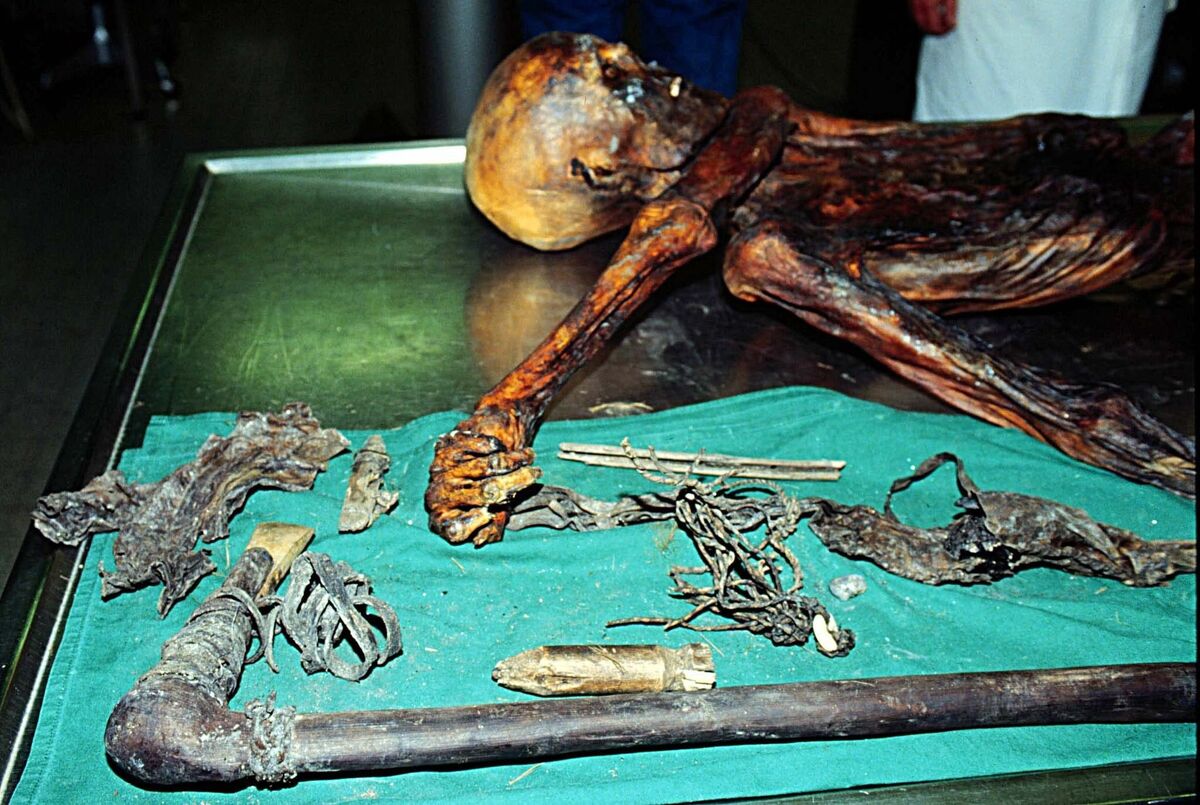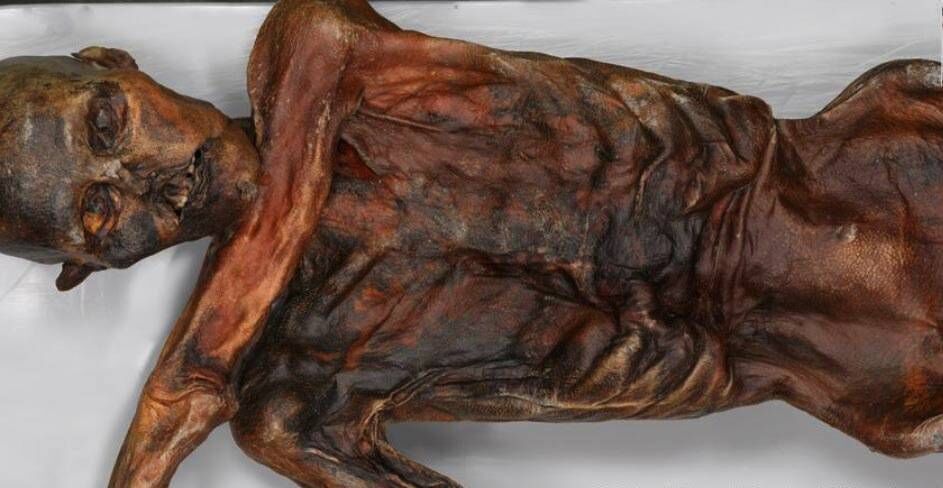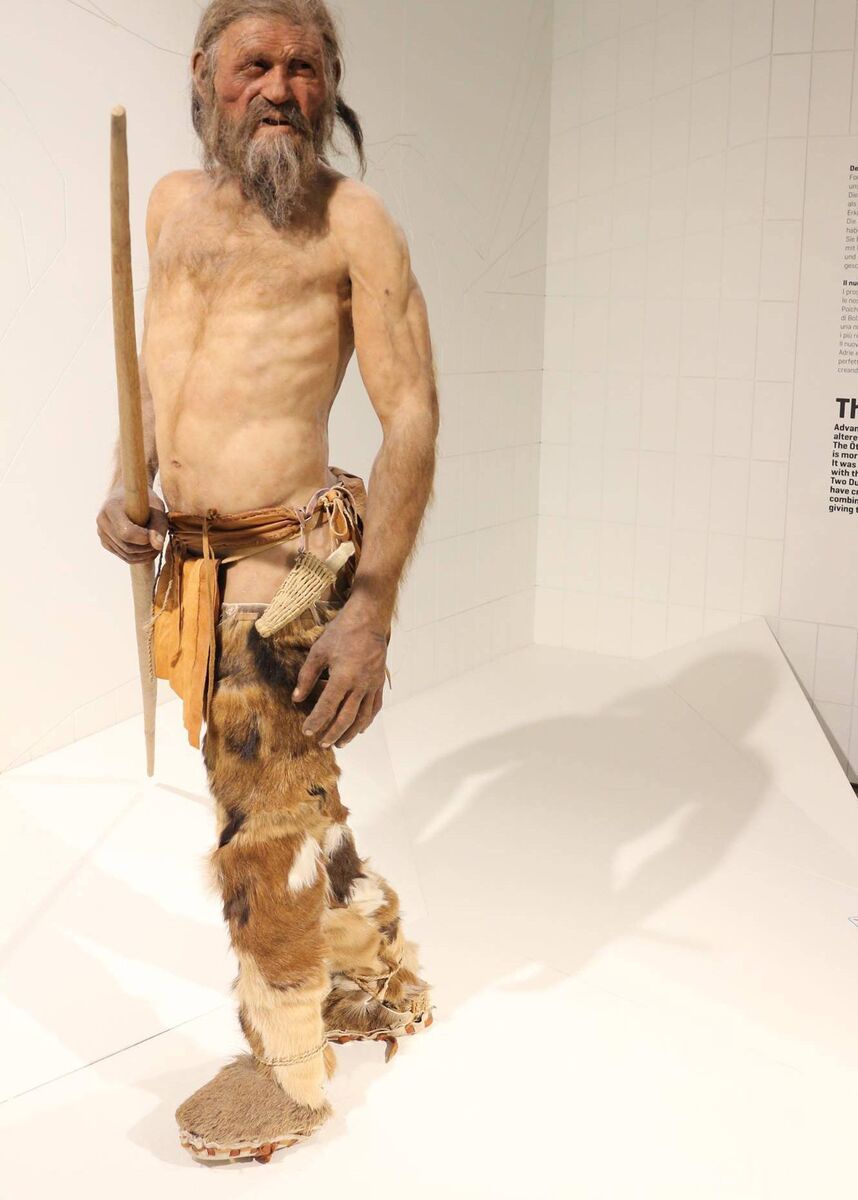Glaciers and Irish bogs make perfect 'time capsules'

An interpretation of how Ötzi the Iceman may have looked. His remains are preserved at the South Tyrol Museum of Archaeology
‘Some day I will go to Aarhus, To see his peat-brown head' — by Seamus Heaney.
"I scared of Whootsie and Jesus," declared Laoise Collins, aged six, in Bolzano last week. She had seen Ötzi the Iceman in the archaeology museum and a graphic Ecce Homo in a local church.
In September 1991, two hikers found a man’s body, high in the Ötztal Alps on the Italian side of the border with Austria. It took three days to free the cadaver from the ice and take it by helicopter to Innsbruck.

Clothing and weapons, found with it, showed that the body was ancient, but its precise age was a shock. Tissue analyses dated it to between 3,350 and 3,100BC; Ötzi, as he was nicknamed, was the most ancient dead European found intact, his demise becoming the continent’s primordial murder mystery. The first Irish farmers were toiling in the Boyne Valley and the Céide Fields back then. Djozer’s pyramid was 2,500 years in the future. Cashel Man would die in 2,100BC. Denmark’s Tollund Man and our Irish bog bodies date to around 400BC.
The corpse, a time-capsule, became deep-frozen in snow. So who was Ötzi and what had happened to him on a fateful day 5,000 years ago? Scientists have discovered much about his life and the creatures of his time.
His animal-skin coat, held together with grass fibres, had been treated with fat. A loin-cloth of goat hide was secured by his belt. A brown bearskin hat and shoes were worn with the hair on the inside. Roe deer leather provided an arrow quiver. Two human fleas, and the eggs of bear fleas, were found — their host must have itched and scratched repeatedly.

Trekking over an Alpine pass, Ötzi carried an unthreaded longbow, a flint knife, fire-lighter fungus, and stone tools. The baggage weighed 14kg. His copper axe was, literally, the cutting-edge technology of the time, anticipating the coming Bronze Age.
Stomach contents included chamois and red deer meat, eaten eight hours prior to death. Pollen analysis suggested that these came from conifer forests at lower altitude. He had dined on ibex meat two hours before his demise.

But 45-year-old brown-haired Ötzi, lactose intolerant, was not a well man. He suffered from back trouble; there was osteoporosis in his spine. Whipworm eggs in his gut probably caused chronic diarrhoea. Helicobacter pylori, the bane of stomach ulcer sufferers, were present. He carried a primitive medical kit.
The ancient pack-packer had been shot from behind, a copper arrowhead embedding in his left shoulder. A deep wound between the thumb and forefinger of one hand showed that he had been fighting about 24 hours previously. There were head injuries.
Ötzi and his possessions are beautifully displayed in Bolzano’s Museum of Archaeology. He lies on his back in an environmentally controlled room, left arm across his chest. You view him through a window in subdued light.
'Out here in Jutland In the old man-killing parishes I will feel lost, Unhappy and at home' — Seamus Heaney.








